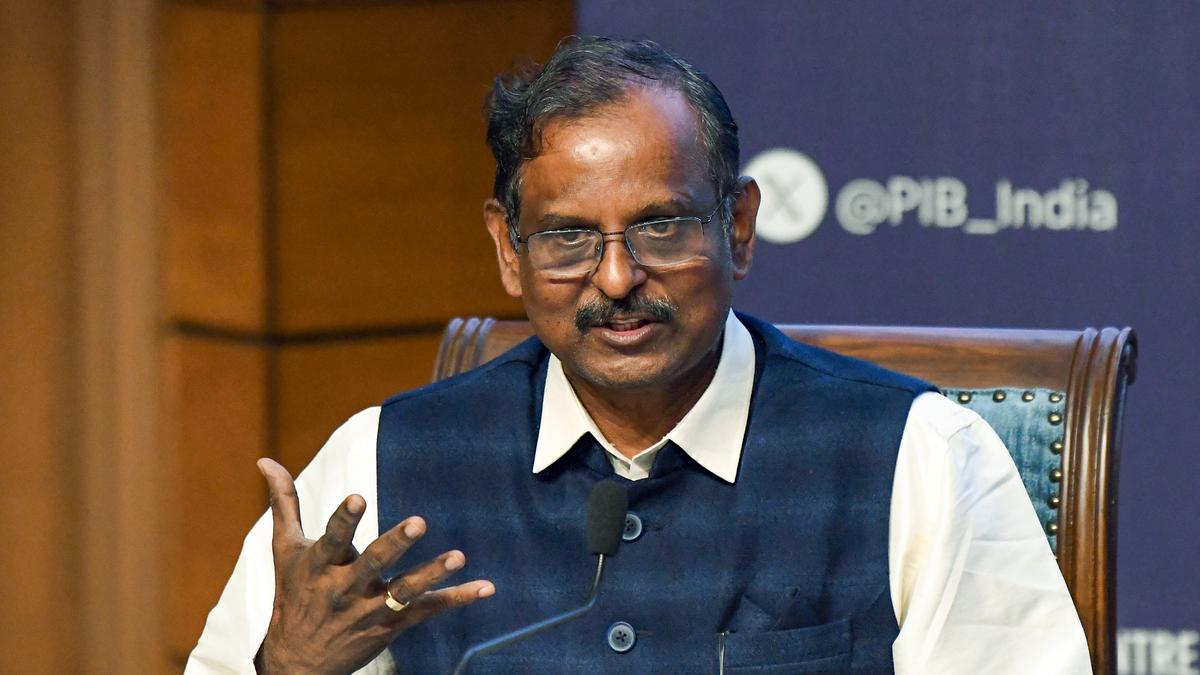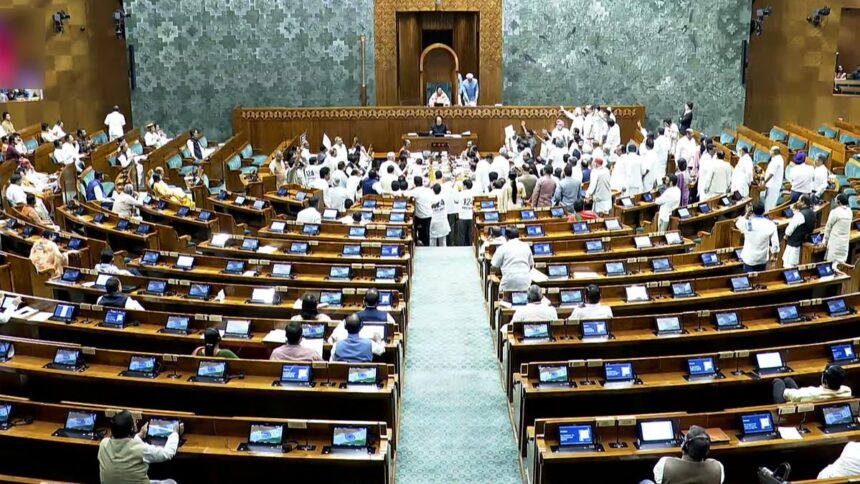
ISRO chairman V. Narayanan addresses an ISRO Press Meet, at the National Media Centre in New Delhi on August 21, 2025.
| Photo Credit: ANI
The Indian Space Research Organisation (ISRO) Chairman, V. Narayanan, on Thursday (August 21, 2025), said the Falcon 9 rocket team that launched Indian astronaut Group Captain Shubhanshu Shukla to the International Space Station (ISS) took the pre-launch leak in the oxidiser line to one of the engines “lightly”. He said that had it not been for the ISRO’s insistence on a full-fledged test, the leak could have caused a “catastrophic failure” of the Axiom-4 mission that successfully ferried four astronauts to the ISS and brought them back.
The mission was aboard the SpaceX-owned Falcon 9 rocket, which has a track record of successful missions to the ISS. It was the first time in 40 years that an Indian made it to space. Costing India nearly ₹548 crore, the mission is believed to provide valuable information for ISRO’s upcoming manned flight missions such as Gaganyaan, scheduled for mid-2027.

The Axiom-4 mission was supposed to be launched on June 11, after the fourth rescheduling, but that was postponed when a liquid oxygen leak was discovered during an engine test in the lead-up to the lift-off. The decision to postpone, it emerges, was controversial as there appeared to be differences between the Falcon-9 team and ISRO on whether the leak was serious enough to postpone the mission.
Two months after the rocket lifted off on June 25, and which has successfully returned, Mr. Narayanan disclosed interactions between the Falcon team and ISRO that suggest that the Falcon team was not upfront with sharing data from the engine test results, nor could it satisfy the ISRO probing on details of the leak.

“I think they assumed that this was a minor leak because it wasn’t their ‘leak’ sensor but an oxygen sensor that had picked up (the leak). We learnt of this from the press (a press conference by SpaceX the previous day) and when we asked them the location of the leak, they said they couldn’t find it. This was shocking to us. Then we asked them for the rate at which oxygen was leaking out; they said this couldn’t be shared as it was “confidential” data. “We asked them nearly 14 questions; only two were answered,” said Mr. Narayanan.
“ISRO has 40 years of experience with liquid engines, and we know that if there is a block somewhere, it can be rectified, but if the source of a leak is due to a crack, it cannot be allowed. We insisted on a “complete correction” and they had to call off the launch on June 10, 5.15 p.m. Following this, the (Space-X) management directed the Falcon team to find the location of the leak. It turned out to be a crack in the fuel line. During the tests, it emerged that the crack was widening; we have the data. If the rocket were to lift off with such a crack, the ensuing vibrations will cause it to give way. That will only result in a catastrophic situation… They probably took this a little lightly,” he added.

The following day (June 12), the leak was repaired and tests were carried out to ISRO’s satisfaction. Subsequent leaks were detected in the Russian service module of the ISS, which led to further launch delays until June 25 when Mr. Shukla and his companions finally lifted off.
Captain Shukla, in response to queries at the press conference, on whether Mr. Narayanan “had saved his life” by insisting on fixing the leak said, “Everyone who does human space flight missions are very responsible. There were multiple postponements, and this wasn’t the only reason. It helped that we had technical expertise from the ISRO and these discussions happened. Ultimately this is what builds trust. ISRO, NASA and Space X have always been transparent and have had regular briefings on emerging issues.”
Published – August 21, 2025 11:28 pm IST




















